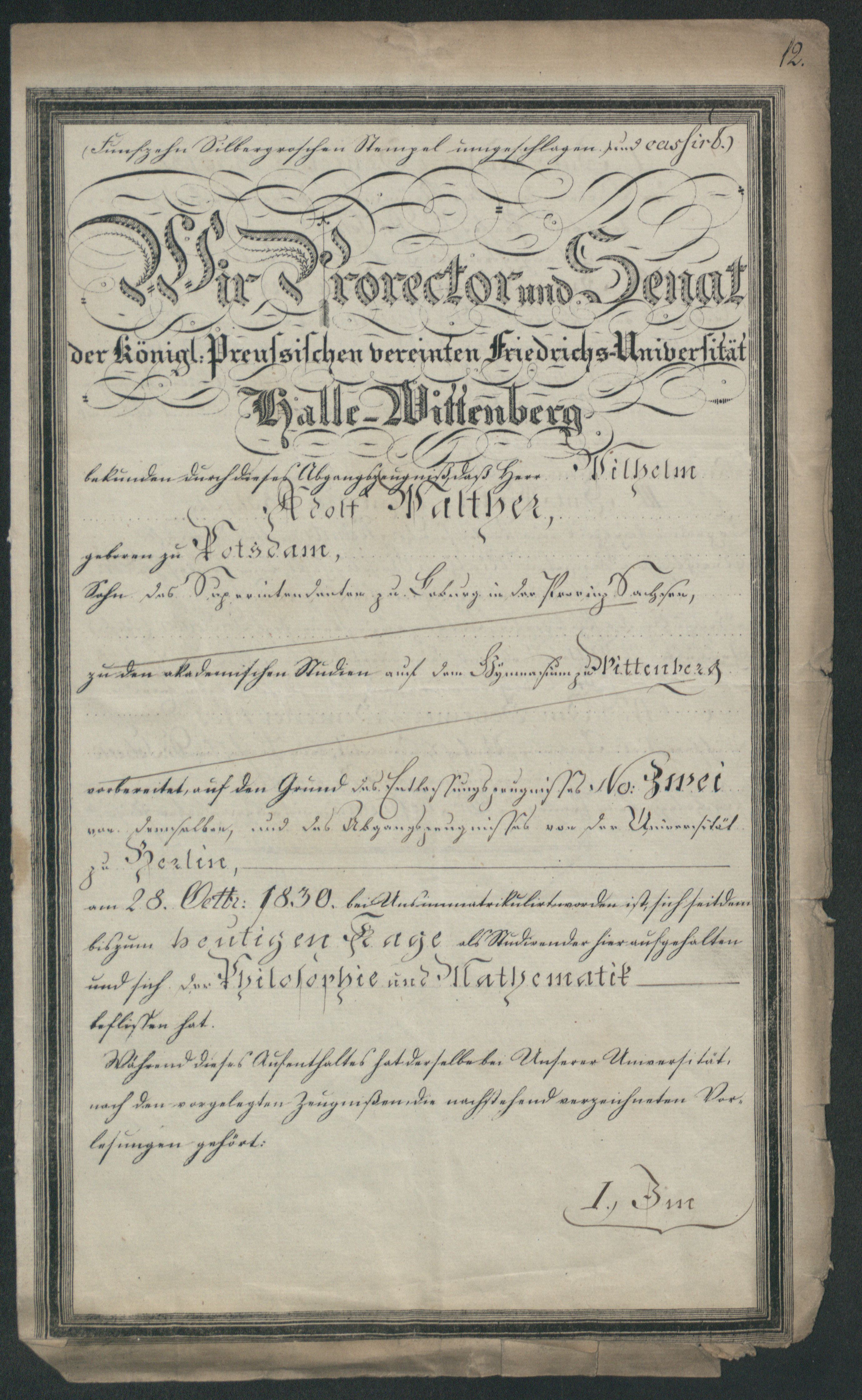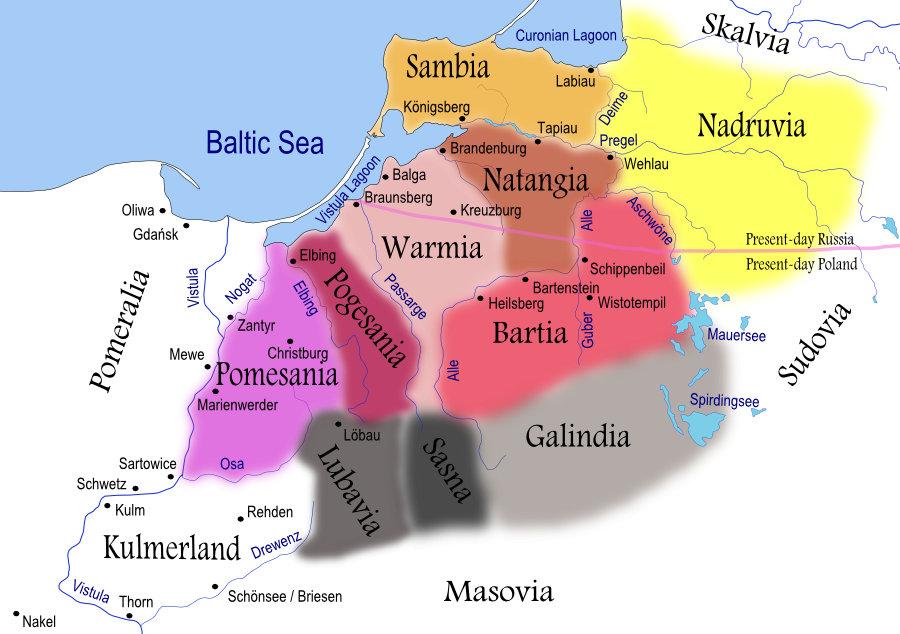|
Frederick William II, Duke Of Schleswig-Holstein-Sonderburg-Beck
Frederick William II, Duke of Schleswig-Holstein-Sonderburg-Beck (18 June 1687 – 11 November 1749) was a Duke of Schleswig-Holstein-Sonderburg-Beck. He served as Prussian field marshal and was appointed Governor of Berlin, but never filled the latter position. Frederick William II was the eldest son of Duke Frederick Louis (1653–1728) and his wife Louise Charlotte of Schleswig-Holstein-Sonderburg-Augustenburg (1658–1740). His siblings included Dorothea, Peter August and Charles Louis. In 1728, Frederick William II succeeded his father as Duke of Schleswig-Holstein-Beck. After his death, he was succeeded by his son Frederick William III, who fell in battle in 1757. The title was then inherited by Frederick William II's brother, Charles Louis. Life Although he was born in Potsdam, Frederick William was raised in KönigsbergAlbinus, p. 131 and studied in Halle. He served in the Prussian Army as a captain in his father's regiment in 1703 and as a lieutenant colonel in ... [...More Info...] [...Related Items...] OR: [Wikipedia] [Google] [Baidu] |
Schleswig-Holstein-Sonderburg-Beck
The House of Schleswig-Holstein-Sonderburg-Beck (Schleswig-Holstein-Beck or Beck for short) is a line of the Schleswig-Holstein-Sonderburg branch of the House of Oldenburg. It consisted of August Philipp, Duke of Schleswig-Holstein-Sonderburg-Beck (1612–1675) and his male-line descendants. Schleswig-Holstein-Sonderburg-Glücksburg, to which several present-day royal houses belong, is the new name of Schleswig-Holstein-Beck. The members of the line were titular dukes of Schleswig and Duchy of Holstein, Holstein, and they were originally not ruling. The line is named after Beck, a manor in Uhlenburg, Ulenburg, Bishopric of Minden (today Löhne, North Rhine-Westphalia, North Rhine Westphalia). August Philipp bought this manor from the Count of Duchy of Oldenburg, Oldenburg, and he made it his residence. Family tree of the Dukes of Schleswig-Holstein-Sonderburg-Beck (tenure as duke is shown in brackets): * August Philipp, Duke of Schleswig-Holstein-Sonderburg-Beck (1627–75), **A ... [...More Info...] [...Related Items...] OR: [Wikipedia] [Google] [Baidu] |
University Of Halle
Martin Luther University Halle-Wittenberg (), also referred to as MLU, is a public research university in the cities of Halle and Wittenberg. It is the largest and oldest university in the German state of Saxony-Anhalt. MLU offers German and international (English) courses leading to academic degrees such as BA, BSc, MA, MSc, doctoral degrees, and habilitation. The university was created in 1817 through the merger of the University of Wittenberg (founded in 1502) and the University of Halle (founded in 1694). MLU is named after Protestant reformer Martin Luther, who was a professor in Wittenberg. Today, the university campus is located in Halle, while ''Leucorea Foundation'' in Wittenberg serves as MLU's convention centre. History University of Wittenberg (''Universität Wittenberg'') was founded in 1502 by Frederick the Wise, Elector of Saxony to propagate the principles of Renaissance humanism. The foundation of the university was heavily criticized, especially wh ... [...More Info...] [...Related Items...] OR: [Wikipedia] [Google] [Baidu] |
Catholicism
The Catholic Church (), also known as the Roman Catholic Church, is the List of Christian denominations by number of members, largest Christian church, with 1.27 to 1.41 billion baptized Catholics Catholic Church by country, worldwide as of 2025. It is among the world's oldest and largest international institutions and has played a prominent role in the history and development of Western civilization.Gerald O'Collins, O'Collins, p. v (preface). The church consists of 24 Catholic particular churches and liturgical rites#Churches, ''sui iuris'' (autonomous) churches, including the Latin Church and 23 Eastern Catholic Churches, which comprise almost 3,500 dioceses and Eparchy, eparchies List of Catholic dioceses (structured view), around the world, each overseen by one or more Bishops in the Catholic Church, bishops. The pope, who is the bishop of Rome, is the Papal supremacy, chief pastor of the church. The core beliefs of Catholicism are found in the Nicene Creed. The ... [...More Info...] [...Related Items...] OR: [Wikipedia] [Google] [Baidu] |
Frederick William I, Duke Of Schleswig-Holstein-Sonderburg-Beck
Frederick William I, Duke of Schleswig-Holstein-Sonderburg-Beck (German: ''Friedrich Wilhelm I. Herzog von Schleswig-Holstein-Sonderburg-Beck''; 2 May 1682 – 26 June 1719) was a son of Duke August and his wife, Countess Hedwig Louise of Lippe-Alverdissen (1650-1731). He succeeded his father as Duke of Schleswig-Holstein-Sonderburg-Beck in 1689. Biography He converted to Roman Catholicism and joined the Army of the Holy Roman Empire. He died of his wounds received six days earlier in the Battle of Francavilla in Francavilla di Sicilia, Sicily, against Spain, in the War of the Quadruple Alliance, on 20 June 1719. Since he had no surviving male heir, he was succeeded as Duke of Schleswig-Holstein-Sonderburg-Beck by his paternal uncle Frederick Louis. Marriage and issue In Munich, Bavaria, on 8 February 1708, he married Maria Antonia called Antoinette Josefa Isnardi di Castello, 8th Countess of Sanfré (Munich, Bavaria, 15 October 1692 – Vienna, Austria, 17/18 Februar ... [...More Info...] [...Related Items...] OR: [Wikipedia] [Google] [Baidu] |
Minden-Ravensberg
Minden-Ravensberg was a Prussian administrative unit consisting of the Principality of Minden and the County of Ravensberg from 1719–1807. The capital was Minden. In 1807 the region became part of the Kingdom of Westphalia, a client state of Napoleonic France. The territory was restored to Prussia after the Napoleonic Wars and became part of the Minden Region within the new Prussian Province of Westphalia in 1815. Geography The province consisted of what is now the Ravensberg Land, between the Teutoburg Forest and the Wiehen Hills, and the Minden Land, north of the Wiehengebirge to the North German lowlands. Minden-Ravensberg was bounded to the east by the Weser, while other important rivers were the Westphalian Aa and the Else. Minden was the regional capital in that time, with other cities such as Bielefeld and Herford being of lower importance. Minden-Ravensberg had a population of 160,301 in 1800 and an area of 2,113 km2 in 1806.Alwin Hanschmidt: ''Das 18. ... [...More Info...] [...Related Items...] OR: [Wikipedia] [Google] [Baidu] |
Kaliningrad
Kaliningrad,. known as Königsberg; ; . until 1946, is the largest city and administrative centre of Kaliningrad Oblast, an Enclave and exclave, exclave of Russia between Lithuania and Poland ( west of the bulk of Russia), located on the Pregolya, Pregolya River, at the head of the Vistula Lagoon, and the only Port#Warm-water port, ice-free Russian port on the Baltic Sea. Its population in 2020 was 489,359. Kaliningrad is the second-largest city in the Northwestern Federal District, after Saint Petersburg and the List of cities and towns around the Baltic Sea, seventh-largest city on the Baltic Sea. The city had been founded in 1255 on the site of the ancient Old Prussians, Old Prussian settlement ''Twangste'' by the Teutonic Knights during the Northern Crusades, and named ''Königsberg'' ("king's mountain") in honor of King Ottokar II of Bohemia. A Baltic port city, it successively became the capital of the State of the Teutonic Order, the Duchy of Prussia and the provinces of ... [...More Info...] [...Related Items...] OR: [Wikipedia] [Google] [Baidu] |
Pregolskiy
Pregolsky () is a residential area within Tsentralny City District of Kaliningrad, Kaliningrad Oblast, Russia. Prior to World War II, it was known by its German language name Holstein (archaic ''Hollstein''Gerullis, p. 57) as first a suburban estate and then a quarter of Königsberg, Germany, located west of the city center. History Located from medieval Königsberg on the northern shore of the Pregel near where the river flowed into the Vistula Lagoon, the Old Prussian village of ''Kasewalx'' was first documented in 1405.Mühlpfordt, p. 60 Other early names included ''Kasewolx'', ''Kasewalk'', and ''Kesewalk''. The name was of Old Prussian origin and referred to a brook or stream. In 1508, ten farmers lived in the village, then known as Kasebalk and Kasebalg.Weise, p. 73 Johann Schimmelpfennig (1604-1669), a Königsberg Councillor and vice-mayor of Kneiphof, possessed the village and surrounding region in 1650. His widow later sold the land to Elector Frederick III. East ... [...More Info...] [...Related Items...] OR: [Wikipedia] [Google] [Baidu] |
Russia
Russia, or the Russian Federation, is a country spanning Eastern Europe and North Asia. It is the list of countries and dependencies by area, largest country in the world, and extends across Time in Russia, eleven time zones, sharing Borders of Russia, land borders with fourteen countries. Russia is the List of European countries by population, most populous country in Europe and the List of countries and dependencies by population, ninth-most populous country in the world. It is a Urbanization by sovereign state, highly urbanised country, with sixteen of its urban areas having more than 1 million inhabitants. Moscow, the List of metropolitan areas in Europe, most populous metropolitan area in Europe, is the capital and List of cities and towns in Russia by population, largest city of Russia, while Saint Petersburg is its second-largest city and Society and culture in Saint Petersburg, cultural centre. Human settlement on the territory of modern Russia dates back to the ... [...More Info...] [...Related Items...] OR: [Wikipedia] [Google] [Baidu] |
Kaliningrad Oblast
Kaliningrad Oblast () is the westernmost federal subjects of Russia, federal subject of the Russian Federation. It is a Enclave and exclave, semi-exclave on the Baltic Sea within the Baltic region of Prussia (region), Prussia, surrounded by Poland to the south and Lithuania to the north and east. The largest city and administrative centre is the city of Kaliningrad. The port city of Baltiysk is Russia's only port on the Baltic Sea that remains ice-free in winter. Kaliningrad Oblast had a population of roughly one million in the 2021 Russian census. It has an area of . Various peoples, including Lithuanians, Germans, and Polish people, Poles, lived on the land which is now Kaliningrad. The territory was formerly the northern part of East Prussia. With the defeat of Nazi Germany in World War II, the territory was annexed to the Russian Soviet Federative Socialist Republic, Russian SFSR by the Soviet Union. Following the Aftermath of World War II, post-war migration and Flight and e ... [...More Info...] [...Related Items...] OR: [Wikipedia] [Google] [Baidu] |
East Prussia
East Prussia was a Provinces of Prussia, province of the Kingdom of Prussia from 1772 to 1829 and again from 1878 (with the Kingdom itself being part of the German Empire from 1871); following World War I it formed part of the Weimar Republic's Free State of Prussia, until 1945. Its capital city was Königsberg (present-day Kaliningrad). East Prussia was the main part of the Prussia (region), region of Prussia along the southeastern Baltic Sea, Baltic Coast. The bulk of the ancestral lands of the Baltic Old Prussians were enclosed within East Prussia. During the 13th century, the native Prussians were conquered by the crusading Teutonic Knights. After the Northern Crusades, conquest the indigenous Balts were gradually converted to Christianity. Because of Germanization and colonisation over the following centuries, Germans became the dominant ethnic group, while Polish people, Poles and Lithuanians formed sizeable minorities. From the 13th century, the region of Prussia was part ... [...More Info...] [...Related Items...] OR: [Wikipedia] [Google] [Baidu] |
Frederick William I Of Prussia
Frederick William I (; 14 August 1688 – 31 May 1740), known as the Soldier King (), was King in Prussia and Elector of Brandenburg from 1713 until his death in 1740, as well as Prince of Neuchâtel. Born in Berlin, he was raised by the Huguenot governess Marthe de Roucoulle. His political awakening occurred during the Great Northern War's plague outbreak in Prussia, leading to his challenge against corruption and inefficiency in government. He initiated reforms, especially in the military, doubling the Prussian Army and increased the officer corps to 3,000. A believer in absolute monarchy, he focused on state development and financial reorganization, imposing taxes and stringent regulations on public servants. He made efforts to reduce crime and centralized his authority during his 27 years' reign, cementing Prussia as a regional power. Despite his effective rule, he had a harsh nature, exacerbated by his health issues. He engaged in colonial affairs, but prioritized militar ... [...More Info...] [...Related Items...] OR: [Wikipedia] [Google] [Baidu] |




